10 Types of Feline Aggression – Part 2
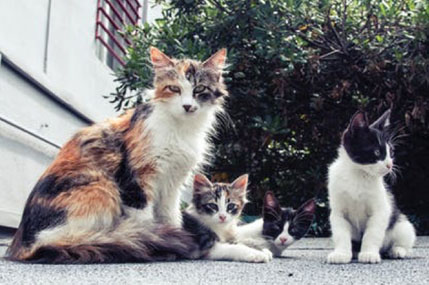
Here we continue to look at the different types of feline aggression. Starting with Maternal and finishing with Idiopathic.
Have you been able to decipher which type(s) your cat is dealing with? If so contact me on social media and let me know, I’d love to hear from you.
6) Maternal aggression
A mother cat, either domesticated or feral, is fiercely protective of her kittens and will defend them at all costs. If you have a domesticated mother cat and her kittens, be cautious when you approach them. Give the mother cat at least a few days with the new kittens before you go near them. A mother cat may potentially be very vocal, hissing and spitting. They will refrain from physical aggression unless they absolutely need to because they do not want to risk being harmed as they need to care for the kittens.
Never go near a feral mother cat unless you have the correct protective clothing on and have a very good reason to approach them. Seek the help of someone who is familiar with dealing with this type of situation.
7) Returning aggression
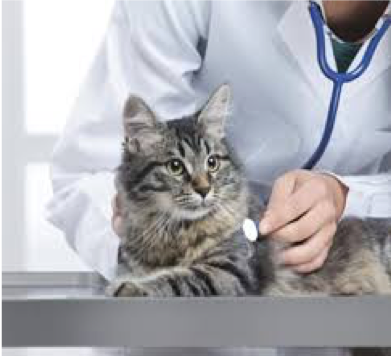
This is when you have more than one cat in the house and one of them takes a trip, either to the vets or perhaps a grooming parlour. When they return their scent profile has changed and the existing cat may react aggressively to the new scent.
In each house (regardless of the number of cats) a community scent is created from the scent of the guardians and the cats. If a cat has had veterinary treatment such as anaesthesia they will smell differently. It may be worth keeping the returning cat separate for a few days and doing a scent exchange between the two cats to build up the community scent again.
8) Contact aggression aka Overstimulation
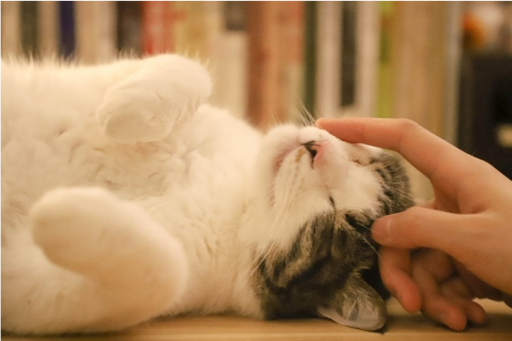
We all love to stroke and pet our cats and most of them really enjoy it too! Each cat that does tolerate human contact will have its limits though and when these are reached the cat will demonstrate contact aggression. For some cats this can be sudden and for others they give you warning signs such as a thrashing tail, a change in pupil dilation or the position of their ears.
For other cats they will just suddenly go from enjoying the stroking to attacking your hand. This is more common in younger cats, those who have not identified their limits or those who are not familiar with human contact. The best advice I can give you is to try and ‘read’ your cat.
If you can’t see the signs of the upcoming switch in behaviour or identify their tolerance levels it would be a good idea to start a diary. Note the time you start playing with your cat, the type of activity and then how long it is before they reach their limit and lash out. Then the next time you play with them try to cut the play time a little shorter than before.
Cats have a wind up and wind down type reaction to play so if they start to show signs of aggression, such as biting or attacking you, try to calm the play down. Lower the tone and pitch of your voice, slow down the movement of the toy. This should help the cat to start to wind down and reduce their frantic need to attack and display play aggression towards you or other cats in the house.
9) Redirected aggression
Sadly, when it comes to redirected aggression you (the guardian) are likely to come off worse! This type of aggression occurs when a cat is aroused by another animal, person or event but they are unable to direct the aggression towards the stimulus. For example, if your cat is sat in the window and it sees a neighbourhood cat, or it smells their urine through a cat flap. The indoor cat becomes agitated and directs the aggression at something within its vicinity like you or another animal in the house.
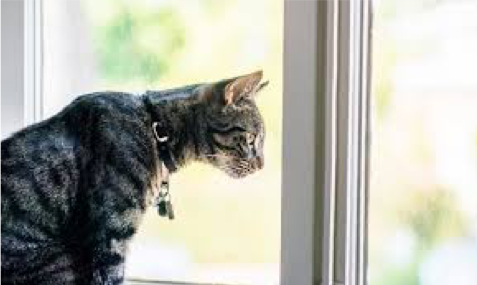
This type of aggression can be hard to stop/reduce. The only way to deal with it is to try and foresee an event or a potential trigger for your cat.
Alternatively when you see your cat becoming agitated or showing signs of aggression such as hissing, spitting or a change in body posture you can distract the cat, usually with some form of play to re-direct the behaviour and their energy into a toy
10) Idiopathic aggression

Kat Jayne
This is the worst kind of aggression in cats and every vet or behaviourists nightmare! This is the term given to aggression that cannot be traced to a medical, psychological, emotional or behavioural issue.
When there is a cause for the aggression we know where to start and potentially what we are dealing with. But when a cat lashes out at other animals or humans for no apparent reason it can be hard to stop it or deal with it.
Idiopathic aggression is the term used when nothing can be associated with the behaviour. So, if you are dealing with feline aggression fingers crossed it is one of the types mentioned above.
Bringing it all to a close…
I hope you have found this two-part blog interesting and it has given you an insight into feline behaviour. Have you identified any type(s) of aggression that your cat is displaying?
If so let me know, I’d love to hear from you.
Don’t forget for most forms of aggression there is a cure or at least several ways the behaviour can be reduced and, in most cases, stopped completely. It’s just a matter of figuring out what you are dealing with and then understanding how to re-direct the behaviour appropriately.
If you are dealing with aggression with your cat and you still can’t quite figure out how to stop it or reduce it, please feel free to contact me and we’ll work through it together.

Best wishes, with love
Julie-Anne x
All Blogs by Julie-Anne Thorne

Leo’s eclipse message
In this blog I’ll share with you the communication that Leo gave me when I was journaling during the recent eclipse. As I was mid-session, writing out my own thoughts, he took over and gave me a download. He has since asked me that I share it wider with you, the Naturally Cats Community, so here we go:

How can I ground my cat’s energy?
In this blog we will look at why you need to offer your cat opportunities to ground their energy to support their health and well-being.

Soul loss in cats
In this guest blog Linda Roberts, Shaman and animal communicator shares with us what soul loss is and how it can affect our feline friends.

From corporate life to connecting with cats
In this blog I share with you how conforming to the corporate world corrupted my soul.
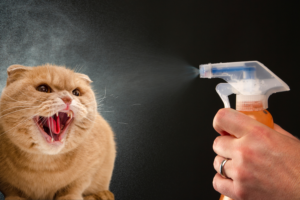
Why the water bottle won’t work on your cat
In this blog we will look at why using a water/spray bottle on your cat to change their behaviour is not only cruel but why it WON’T work! And why it’s damaging your relationship with your cat one spray at a time.

Is it OK to give my cat a time out?
In this blog we will look at what a time out is, and why they aren’t good for your cat(s). Despite it becoming a popular way to discipline cats I’ll share with you below how it can actually damage your relationship with your feline friend.




